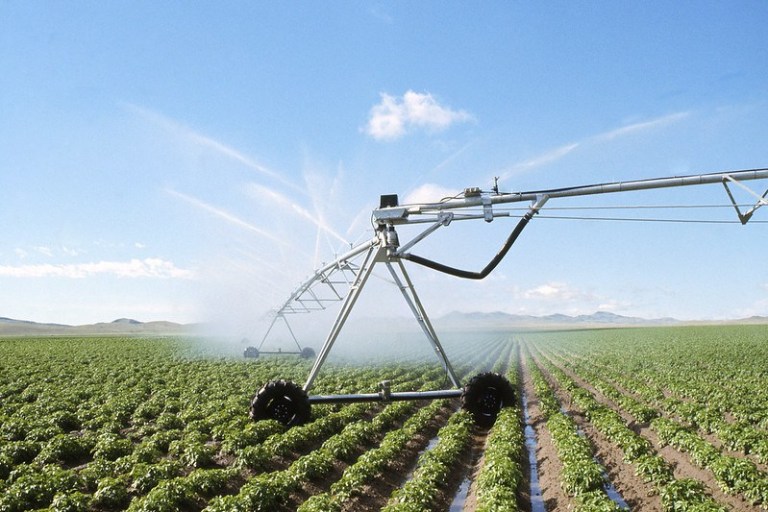GMW is responsible for providing water availability information to local irrigators and other water users during the irrigation season each year. GMW provides two types of information to the public. First, throughout the irrigation season, GMW makes seasonal determinations which specify the amount of water available to irrigators, given current conditions. They typically announce a determination as a percentage of the entitlement volume (the maximum volume of water that can be taken during any year). Seasonal determinations are made for individual water systems and for the level of reliability of an entitlement (i.e. the frequency with which water is allocated to a user given their entitlement). Seasonal determinations are updated bi-monthly based on the current conditions. An example of a seasonal determination announcement can be seen in Figure 1.

Second, allocation outlooks are also provided by GMW. The outlooks provide entitlement holders with a guide to what the seasonal determinations may be, based on different scenarios. An example of an allocation outlook can be seen in Figure 2.

Under GMW’s current practice, when allocation outlooks are announced they are described as a percent of water to be allocated under a range of scenarios. These scenarios include ‘wet’, ‘average’, ‘dry’ and ‘extreme dry’ conditions, based on historical climate records and inflows into GMW’s dams (Figure 2). The allocation outlooks are updated every month, providing outlooks for the remainder of the irrigation season. Irrigators then typically assess the likelihood of these different scenarios to make farm decisions, such as whether to plant specific crops, and whether to buy or sell water. But the range of the scenarios is wide, and irrigators carry the full risk of any decisions.
The University of Melbourne’s Water Forecasting Lab is currently collaborating with GMW to reduce the uncertainty in the water allocation outlooks, and thus reduce the risks posed to the irrigators. Early results show that the work by the University of Melbourne is successful at narrowing the uncertainty range of the allocations outlooks. This will help irrigators plan with greater confidence for the season ahead. To trial this new modelling approach, GMW’s allocation outlooks were updated by implementing streamflow forecasts (available for a lead time of 3 months) and longer-term climate forecasts. From this data, probability distributions are produced, which could replace the scenarios currently used by GMW.
As an example, Figure 3 compares different methods for producing allocation outlooks for the Goulburn system. The performance of the outlooks can be judged based on their relation to the actual allocation determination. According to GMW’s scenarios (dashed colored lines), the future allocation is shown to increase to between 54% and 100% by 17 February 2020, with a midpoint outlook of 81%. In comparison, the future allocation (blue shaded areas) based on forecast data available in October 2019, predicts that the allocation would increase to between 65 and 82% by 17 February 2020, with a probability range of 25 to 75%, and the midpoint at 72%. The realised allocation determination for the high-reliability entitlements in the Goulburn system on 17 February 2020 was 71%. This result shows that the uncertainty in the allocation outlooks is largely narrowed down by using the recent streamflow and climate forecasts, and the median of the allocation is much closer to the actual allocation determination.

GMW managers are encouraged by the preliminary results and are closely watching its forecasts for the 2020-21 season. The modelling will also be tested on previous years’ allocations and outlooks to show the robustness of the method.
GMW River Operations Coordinator Guy Ortlipp says this research could significantly change the way GMW provides water allocation information to its customers. It would be the first major change applied to water allocation outlooks in 20 years.
While there is a clear trend of reducing inflows into the Goulburn system, attributed to changes in climate and land use, this is not fully reflected in the historical data that currently underpins outlooks.
“We do apply a trend to the data we use, but we expect the trend itself will continue to change,” Mr. Ortlipp says. “This makes it hard to get the accuracy our customers are looking for.”
He says the outlook information GMW provides does “anchor expectations” about the season for its 15,000-plus customers, most of whom look at the numbers at some point during the season.
“If we can provide more accurate information, it will give customers greater confidence in planning what they are going to do and making decisions.”
The Australian Bureau of Meteorology (BOM) streamflow forecasts are an important part of the new modelling approach, and the project aims to extend these beyond three months. This will also help to improve BOM’s longer-term climatology forecasts by incorporating the trends along with historical climate and inflow records.
Mr. Ortlipp says the new modelling approach is still in the early stages of development, but it has already shown potential to narrow the wide range of allocation possibilities provided to farmers in the current outlook process.
This research is part of a larger three-year Australian Research Council (ARC) Linkage project that aims to improve both water availability and water demand forecasting tools for managers in the Murray–Darling Basin. As part of the ARC project, GMW’s involvement in the research collaboration provides access to a pool of expertise, including that at the University of Melbourne, for a “relatively modest investment”, he says.
Lower Murray Water in Victoria and the NSW Department of Planning, Industry and the Environment are also involved in the project. Other collaborators include the Bureau of Meteorology, the Murray–Darling Basin Authority, CSIRO and the European Centre for Medium-Range Weather Forecasts.
Once the modelling process is refined, the research team expects it can be used to improve allocation outlooks for irrigation districts across Australia and could be relevant for other countries as well.
Firs published by Hepex (link)

